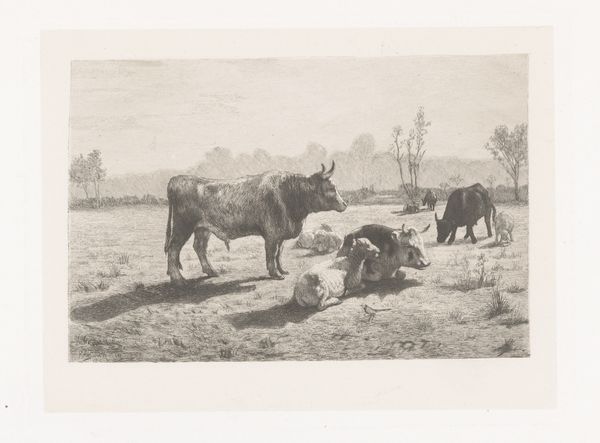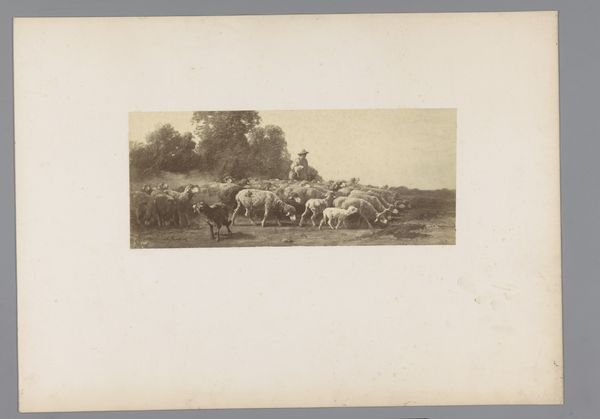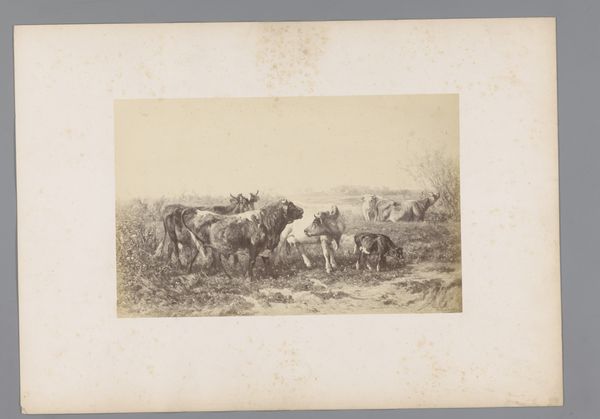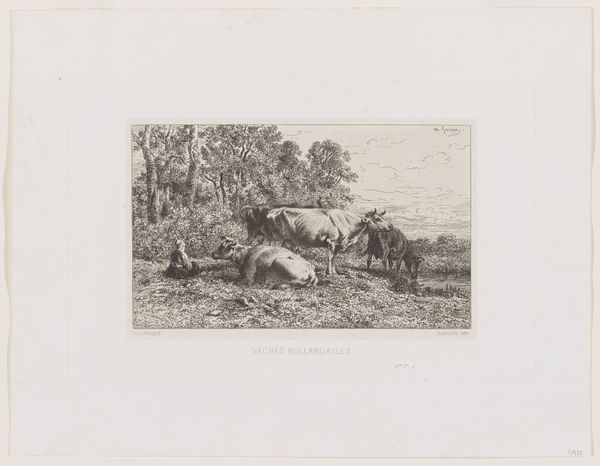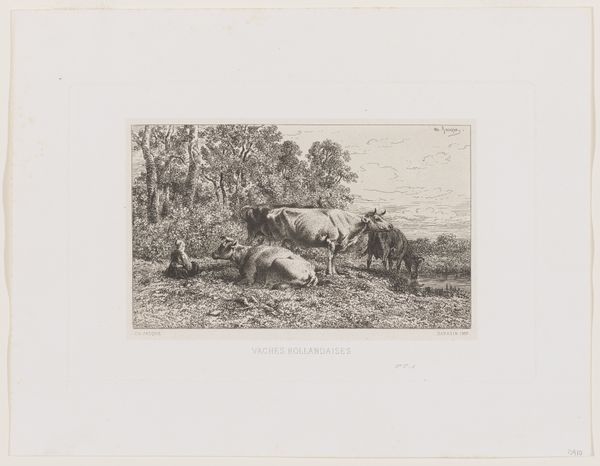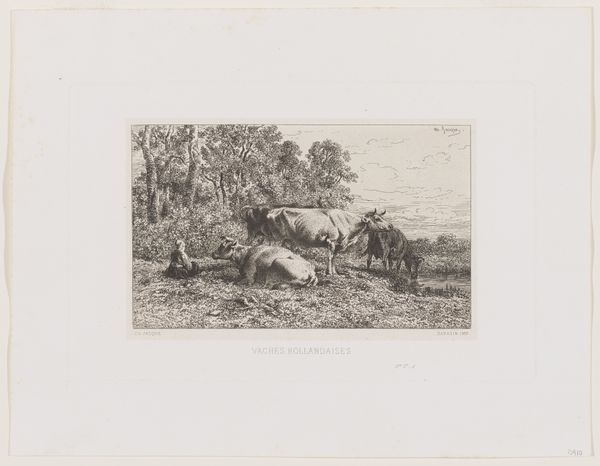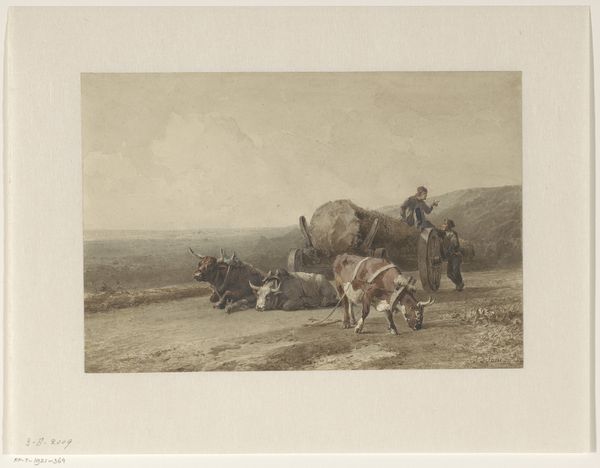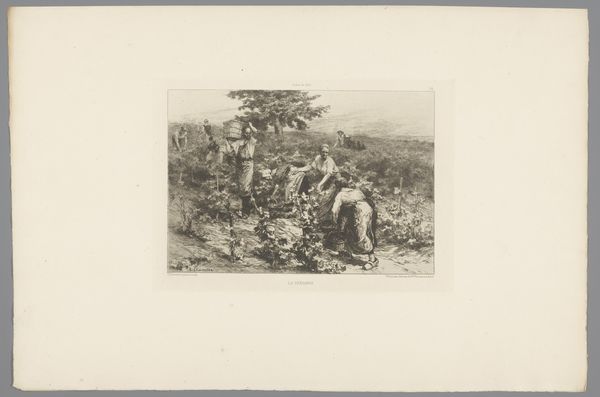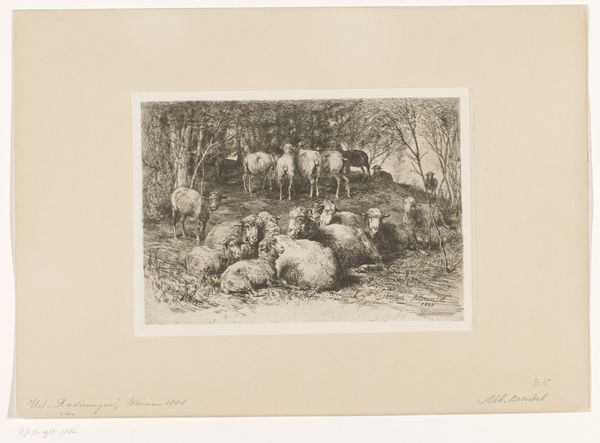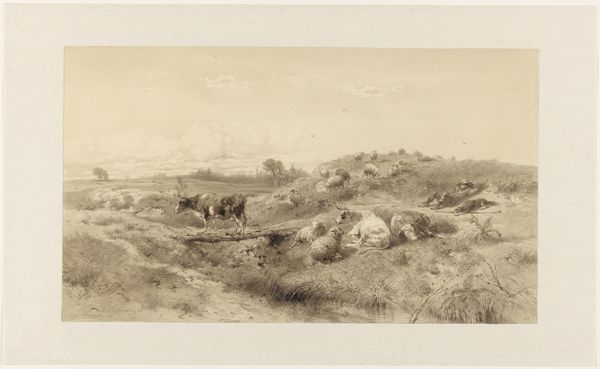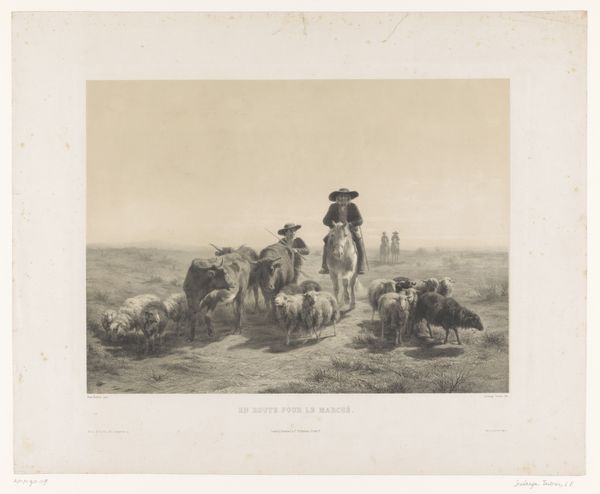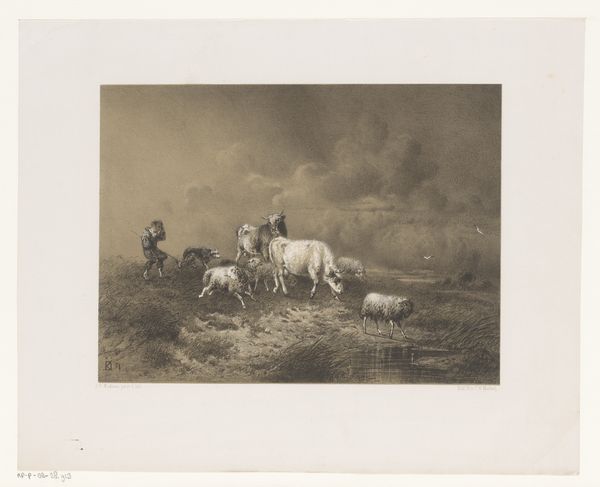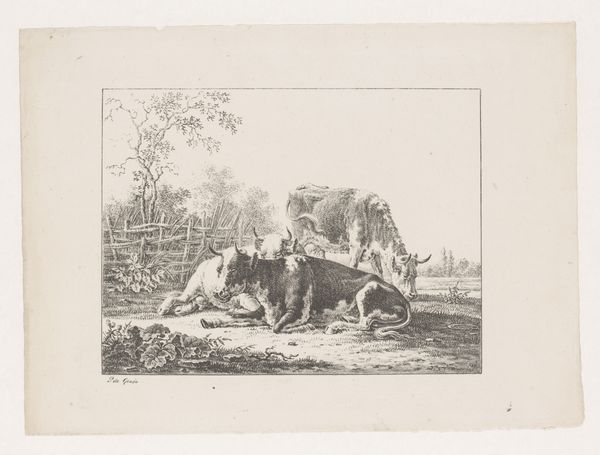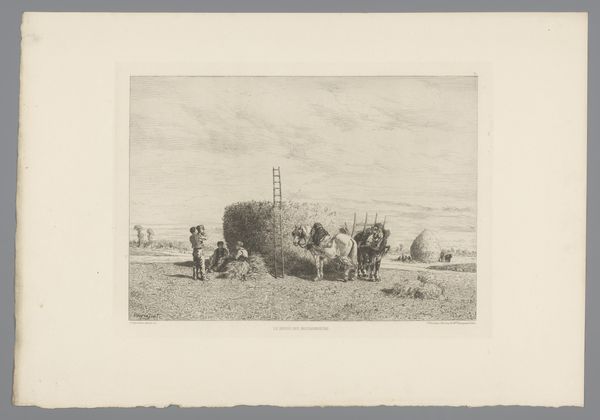
Dimensions: height 526 mm, width 696 mm
Copyright: Rijks Museum: Open Domain
Editor: We're looking at "Schapen in een weide," or "Sheep in a Meadow," an 1854 print by Louis Emmanuel Soulange-Teissier. It’s quite a tranquil scene, but the monochrome palette and detailed rendering give it a slightly solemn feel. What do you make of its formal qualities? Curator: The use of line and tone are indeed striking. Consider the deliberate arrangement: the varying postures of the sheep create a subtle rhythm across the horizontal plane. Note, too, the texture achieved within a limited tonal range. It's all achieved using a relatively sparse matrix. The artist isn’t merely representing sheep, he is composing shapes, textures, and tones to create a carefully balanced visual experience. Editor: It’s interesting how the darkness of some of the sheep makes them almost sculptural. Curator: Precisely! Their dark mass contrasts sharply with the lighter wool, which itself suggests form and volume through delicate shading. But observe, the landscape behind serves primarily as a backdrop. Its function is not descriptive, but compositional, serving to frame and thereby emphasize the foreground elements. This conscious orchestration is central to the work's artistic success. Do you perceive any tension or discordance in the composition? Editor: I don't think so. The composition feels resolved and complete to me. Curator: Then the artist has succeeded in conveying a world which seems whole and complete, through a delicate balance of carefully considered shapes. It also teaches us about form. Editor: I appreciate how closely you look at the construction of an artwork to understand its meaning. It really helps you focus.
Comments
No comments
Be the first to comment and join the conversation on the ultimate creative platform.
